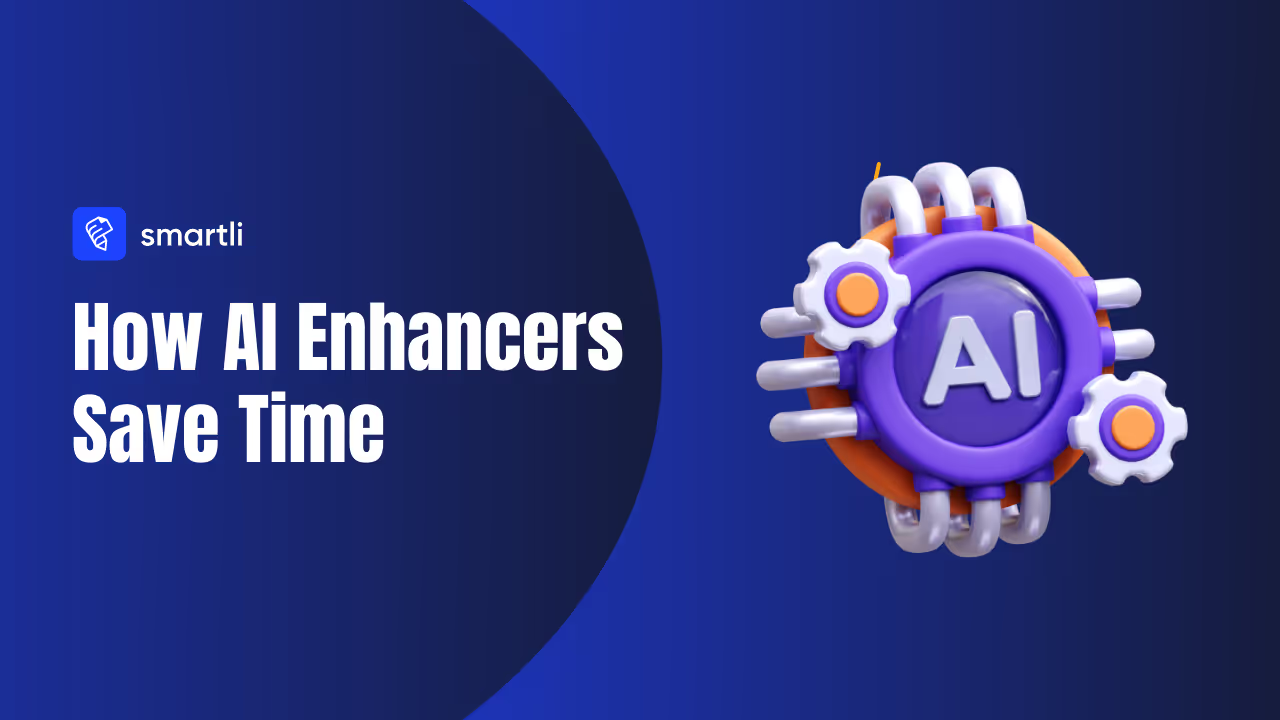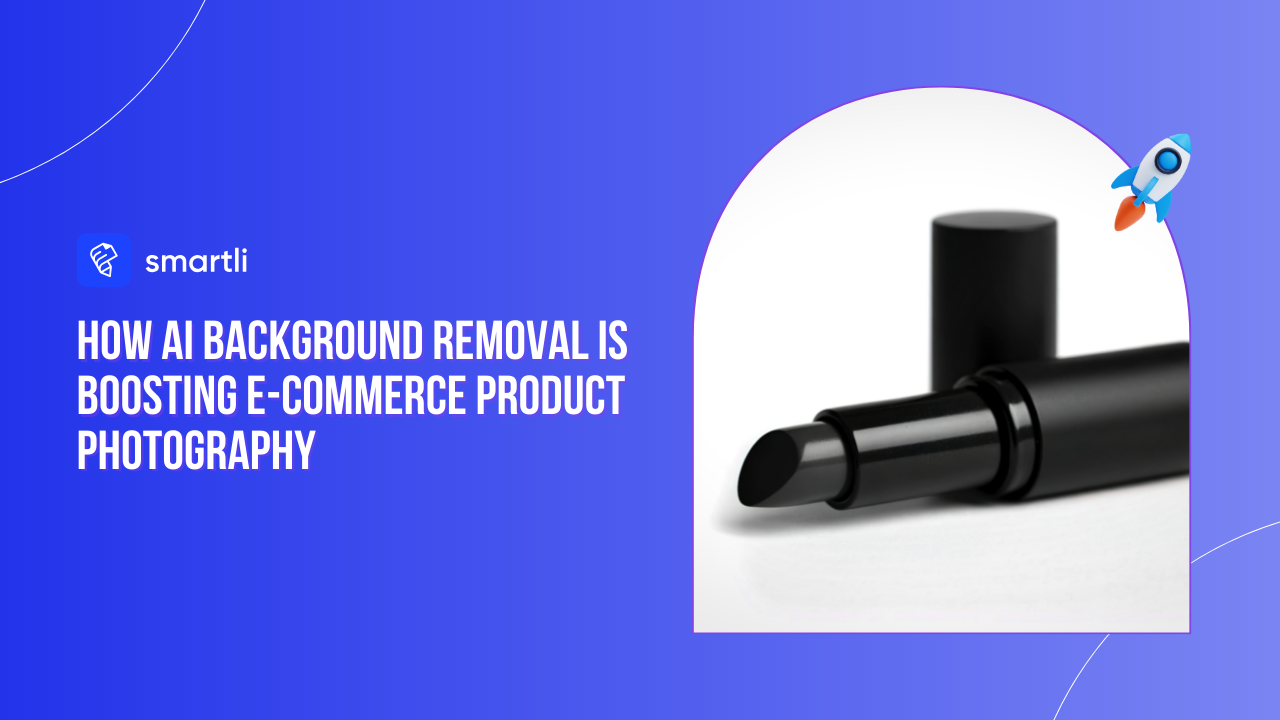You know that feeling when you open a blank page, stare at it, and hope the right words just show up? Writing website copy that actually connects with people isn’t easy. It’s not just about describing your business—it’s about making readers care, trust, and take action.
That’s where AI website copy comes in. But let’s clear one thing up: this isn’t about letting a robot write for you. It’s about using AI as a creative partner that helps you brainstorm faster, stay on brand, and turn half-formed thoughts into sharp, engaging lines.
With Smartli, you can skip the struggle and start shaping content that sounds like you—authentic, clear, and persuasive. In this guide, we’ll explore how AI-generated website copy really works, how to use Smartli to make it your secret weapon, and how to keep your copy feeling human while powered by AI.
What AI-Generated Website Copy Really Means in 2025
Before diving into tools and strategies, let’s get clear on what AI-generated copy actually is—and what it’s not. Many people imagine it’s as simple as pressing a button and watching perfect content appear, but that’s not how it works. To use it effectively, you need to understand its logic, strengths, and limitations.
How It Works in Plain English
Think of AI as a writing partner who never runs out of ideas. It doesn’t “think” like a human—it predicts words based on patterns it’s learned from billions of sentences. When you give it a well-structured prompt, it can quickly build headlines, product descriptions, or even full web pages that align with your intent.
Platforms like Smartli make this process even smarter. They bring structure to the chaos, helping you feed in your brand’s tone, audience, and goals. The result? Website copy that feels human, fits your brand personality, and doesn’t read like it was written by a chatbot.
Strengths vs. Limits
AI’s biggest strength is its ability to save time while keeping your message consistent. It can generate multiple variations, suggest fresh angles, and keep your tone on point. But here’s the catch—it still needs you.
AI can’t fully grasp your brand’s emotion or judgment. It might overpromise, repeat clichés, or sound too generic without human direction. Your role is to steer it, refine it, and decide what feels authentic. In short:
- Use AI to kickstart ideas, not to publish blindly.
- Let it guide, not replace, your creativity.
- Always review and edit before hitting publish.
Outcomes That Actually Matter
AI-generated copy isn’t about producing more words—it’s about producing better ones. The real goal is clarity that earns attention, tone that sounds like you, and messages that get readers to act.
When used right, AI becomes less of a “writing robot” and more of a creative multiplier. It helps you express your ideas faster and sharper, so your words connect instead of just filling space.
Smartli in Your Workflow
Now that you understand what AI-generated website copy really is, let’s talk about how Smartli fits into the picture. Think of it as the bridge between your ideas and the final, polished copy. It helps you organize, generate, and refine content with precision—without losing your brand’s human touch.
Setting the Right Inputs
Every great output starts with the right input. Smartli works best when you feed it real context instead of vague commands. That means giving it your brand voice samples, target audience details, product info, and even competitor insights.
If you want Smartli to write like your brand, you have to show it who your brand is. Add tone examples, personality traits, and common phrases your team already uses. The more you teach it, the better it gets at mirroring your voice naturally.
Shaping the Output
Once your inputs are in place, Smartli transforms them into structured drafts. Instead of random lines of text, it gives you page-ready sections—headlines, subheads, CTAs, and even microcopy that fits perfectly across your site.
You can generate multiple versions, compare them side by side, and fine-tune the one that feels most “you.” Smartli doesn’t just write; it helps you shape the message until it hits that sweet spot between clarity and persuasion.
Keeping Guardrails in Place
Even the smartest AI can go off track if you don’t give it boundaries. That’s where Smartli’s built-in guardrails come in. You can add prompts like “avoid exaggerated claims,” “stick to friendly tone,” or “don’t use marketing buzzwords.”
These small rules make a big difference—they keep your content aligned with brand values while filtering out filler language or inaccuracies. Think of it as setting up a creative sandbox: Smartli can play freely, but only within the limits that protect your voice and credibility.
Prep That Multiplies Copy Quality
Before you start typing prompts or generating headlines, there’s a step most people skip — preparation. The truth is, AI can only be as good as the information you feed it. If your input is vague, your output will sound generic. This section helps you set a solid foundation so your copy doesn’t just sound good — it performs.
Build a Quick Audience and Job-To-Be-Done Brief
Every strong website copy begins with a deep understanding of who you’re talking to and what they’re trying to achieve.
Ask yourself:
- Who’s visiting this page?
- What problem are they trying to solve?
- What decision do I want them to make here?
Write a short one-page brief with your audience’s pain points, motivations, and desired actions. Smartli can use this information to tailor your copy to what truly matters to your readers — not just what sounds nice.
Organize Your Information Architecture
AI can’t read your mind, so it needs structure. Before you generate anything, map out your website’s architecture — homepage, product pages, about, contact, FAQs, and so on.
Label the purpose of each page (educate, convert, inform) and note key messages you want to convey.
This process gives AI clarity and context. It’s like giving it a GPS — it knows exactly where to go and what tone to use at each step. With Smartli, you can store these structures as templates, so your team keeps a consistent content flow.
Build an Evidence Bank
Here’s where most people fall short. AI is great at writing, but it’s not always great at knowing. You can fix that by creating an evidence bank — a living document filled with real data, testimonials, stats, and facts your brand can use.
Every time you prompt Smartli, reference this evidence bank. It keeps your copy credible, trustworthy, and grounded in truth — something even the best AI can’t fake. The more data you feed it, the more authentic and confident your content feels.
Nail Brand Voice Without Sounding Robotic
Before you hit “publish,” there’s one last element that separates average AI copy from powerful, human-sounding content — your brand voice. It’s what makes your words feel familiar, even to first-time visitors. Without it, even the best AI-generated copy feels empty.
Extract Your Brand’s Real Voice
Start by studying your existing content. Look at your emails, social posts, and ads — how do you sound when you’re at your best? Are you playful, minimal, or authoritative? Write down those patterns.
Feed Smartli a few examples and define your tone rules: how formal you want to sound, whether you use contractions, and which words or phrases are “on brand.” The clearer your instructions, the more naturally your AI will capture your essence.
Use Style Constraints and Negative Prompts
AI learns better when you tell it what not to do. Add specific style constraints like “avoid buzzwords,” “don’t sound overly salesy,” or “use first-person tone when appropriate.”
You can also include negative prompts such as “don’t use clichés like ‘game changer’ or ‘revolutionary.’” This keeps your copy sharp, relatable, and free of the fluff that makes readers tune out.
Run Consistency Checks
After Smartli generates your copy, do a quick brand voice check. Ask yourself — does this sound like us? Does it feel consistent with how we talk across emails, social media, and ads?
If anything feels off, tweak your tone parameters and rerun the prompt. Smartli learns from your feedback, so over time, it starts speaking your brand’s language fluently.
Responsible SEO For Website Copy
Writing great copy is only half the job — getting people to find it is the other half. SEO is what connects your message to the people searching for it. But when it comes to AI-generated content, you need to strike a careful balance between optimization and authenticity.
Map Search Intent, Don’t Chase Keywords
Before you start adding keywords, understand why someone is searching. Are they looking for information, trying to compare options, or ready to buy? Each type of intent needs a different kind of page and tone.
Informational intent might need blog-style content, while transactional intent demands persuasive copy and CTAs. If you give Smartli this context in your prompts, it won’t just stuff keywords — it’ll write with purpose.
Build With SEO Entities, Not Just Words
Search engines don’t rank pages based on one keyword anymore. They look for related entities — concepts and terms that naturally connect. For example, if your main keyword is “AI website copy,” Smartli can also weave in related entities like “brand voice,” “conversion rate,” and “readability.”
By doing this, you create contextually rich content that feels natural to readers and understandable to algorithms.
Follow An On-Page SEO Checklist
Once your copy is written, run through a quick checklist:
- Does your H1 clearly describe the page topic?
- Is the primary keyword in the first 100 words?
- Are headings, meta titles, and CTAs aligned with user intent?
- Do internal links connect related topics?
- Is your copy formatted for scanning, with short paragraphs and subheadings?
These small tweaks make a big difference in how search engines and readers experience your page.
Keep It Natural
The biggest SEO mistake with AI content is over-optimization. Keyword stuffing makes your writing sound robotic and unnatural. Smartli helps avoid this by prioritizing readability and flow.
Use your target keyword — like AI website copy — sparingly, only where it fits the context. Let your message sound like a real person wrote it. Because if it doesn’t feel human, it won’t convert — even if it ranks.
Fact-Checking, Compliance, And Disclosure
AI can be brilliant at writing—but it doesn’t always get the facts straight. That’s why fact-checking and compliance aren’t optional steps; they’re what protect your credibility and your audience’s trust. This section helps you keep your content accurate, ethical, and transparent.
Understand The Risks
AI tools generate text based on patterns, not truth. That means they can sometimes invent statistics, exaggerate results, or make claims that sound right but aren’t. When it comes to product details, pricing, or regulated topics, that’s a serious problem.
Your job is to double-check everything. If Smartli writes, “Used by over 5,000 businesses,” verify that number. If it claims a result like “boosts conversions by 40%,” make sure you have the data to back it up.
Create A Fact-Checking Routine
Before you publish any AI-generated website copy, run it through a quick accuracy audit:
- Verify every statistic and quote
- Cross-check product details and specs
- Ensure no outdated or misleading info remains
- Look for bias or exaggerated promises
You can even build a fact-checking checklist into Smartli’s workflow so your content is automatically flagged for review before it goes live.
Stay Compliant With Regulations
If your brand operates in a regulated industry (finance, health, law, etc.), compliance is non-negotiable. Every claim must meet local guidelines and legal standards. Include disclaimers where necessary and ensure privacy, data, and accessibility statements are up to date.
You can instruct Smartli to add compliance-friendly phrasing like “results may vary” or “based on verified internal data.” These small additions can save you from big problems later.
Be Transparent About AI Usage
Honesty builds trust. If AI helped generate parts of your website copy, a simple disclosure—like “Some content was created with AI and reviewed by our editorial team”—shows integrity.
Transparency doesn’t make your brand look less authentic. In fact, it makes you more credible. You’re showing that technology supports your creativity, not replaces it.
FAQs About AI-Generated Website Copy
Is it okay to use AI for website copy?
Yes—used well, AI speeds up drafting and editing without replacing your judgment. Treat it as an assistant: provide context, review claims, and polish tone before publishing.
Will AI content hurt my SEO or rankings?
AI content won’t hurt rankings if it’s accurate, original, and helpful. Problems come from thin, generic copy or unverified claims. Google increasingly values credibility, so quality matters.
How do I keep brand voice when using AI?
Feed AI examples of your best existing content, define tone rules and “do/don’t” constraints, and then edit the drafts for nuance. Human oversight helps maintain authenticity.
What pages should I write with AI first?
Begin with pages where variation and speed matter most—homepage hero, landing pages, product/service pages, and FAQs. Use AI-generated options to test what resonates.
Which tools are best for AI website copy?
Choose tools that let you control voice, refine outputs, and generate multiple versions. Look for ones that fit your workflow, editing standards, and integration needs.


















